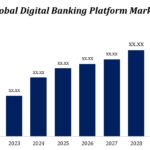Neobanks and Digital Banking
In a world where smartphones are ubiquitous and technology is advancing at an unprecedented pace, traditional banking is undergoing a profound transformation. Neobanks and digital banking have emerged as disruptors, challenging the status quo and reshaping the way we perceive and interact with financial services. This blog explores the rise of neobanks, the key features of digital banking, and the impact they are having on the financial landscape.
Understanding Neobanks:
Neobanks, or digital-only banks, are financial institutions that operate exclusively online, without any physical branches. Unlike traditional banks, neobanks leverage technology to provide a range of banking services entirely through mobile apps or web platforms. These institutions aim to streamline the banking experience, offering customers a seamless and digital-first approach to managing their finances.
Key Features of Neobanks:
- Mobile-First Accessibility: Neobanks prioritize mobile accessibility, allowing users to manage their accounts, make transactions, and access financial services from the convenience of their smartphones. This mobile-centric approach caters to the digital preferences of today’s consumers.
- Fee Transparency: Neobanks are known for their transparent fee structures. Many neobanks offer fee-free or low-fee accounts, providing users with clarity on the costs associated with their financial activities.
- Fast and Easy Account Opening: The account opening process with neobanks is often quick and straightforward. By leveraging advanced technology for identity verification, neobanks eliminate the need for extensive paperwork and lengthy approval processes.
- Innovative Budgeting Tools: Neobanks often come equipped with intuitive budgeting and financial management tools. These features empower users to track their spending, set savings goals, and gain a holistic view of their financial health.
- Collaborations with Fintech Partners: Neobanks frequently collaborate with fintech companies to offer a broader range of financial services. These partnerships enable them to provide innovative solutions such as investment opportunities, insurance products, and more.
Understanding Digital Banking:
Digital banking encompasses a broader spectrum of financial services delivered through digital channels, including both traditional banks with online platforms and neobanks. Digital banking leverages technology to enhance the efficiency, accessibility, and convenience of financial services, catering to the digital preferences of modern consumers.
Key Features of Digital Banking:
- Online Account Management: Digital banking allows users to manage their accounts, check balances, and perform transactions online. The shift toward digital account management provides flexibility and convenience for users.
- Electronic Transactions: With digital banking, users can conduct a wide range of electronic transactions, including fund transfers, bill payments, and online purchases. This reduces the reliance on physical currency and traditional banking channels.
- Automation and AI Integration: Many digital banks integrate automation and artificial intelligence to enhance user experiences. This includes personalized financial insights, automated savings features, and AI-driven customer support.
- Security Measures: Digital banking platforms prioritize robust security measures, including encryption, multi-factor authentication, and real-time fraud detection. These measures are crucial to ensuring the safety of user data and transactions.
The Impact on Traditional Banking:
The rise of neobanks and digital banking is not only changing consumer expectations but also challenging traditional banking models. Traditional banks are recognizing the need to adapt and embrace digital innovation to remain competitive. As customers increasingly seek seamless, user-friendly, and tech-driven banking experiences, the financial industry is at a pivotal juncture.


































